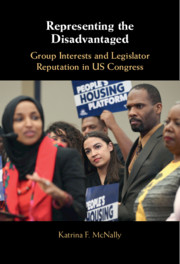Contents
2Member Reputation and the Advocacy Window: An Integrated Theory of Representation
4The Choice to Be a Disadvantaged-Group Advocate in the House of Representatives
5The Choice to Be a Disadvantaged-Group Advocate in the US Senate
5.1Constituency Characteristics: Group Size and Ambient Temperature
5.2Reputations for Disadvantaged-Group Advocacy in the US Senate
5.3Group Size, Ambient Temperature, and Reputation Formation in the Senate
5.4Alternative Drivers of Reputation Formation in the US Senate
5.5Institutional Environment, Electoral History, and Reputation Formation
5.6Descriptive Representation and Reputation Formation in the US Senate
5.7The Impact of Descriptive Representation on Senator Reputation
6Reputation-Building Tactics in the Senate and House of Representatives
6.1Reputation and the Use of Representational Tools: Bill Sponsorship and Cosponsorship
6.2When Do Members of Congress Use Bill Sponsorship and Cosponsorship as Reputation-Building Tactics?
6.4Upholding Reputations for Group Advocacy Using Bill Sponsorship and Cosponsorship
6.5Bill Sponsorship and Cosponsorship and the Committee Structure
6.6Impact of Committee-Group Alignment on Sponsorship and Cosponsorship Decisions

